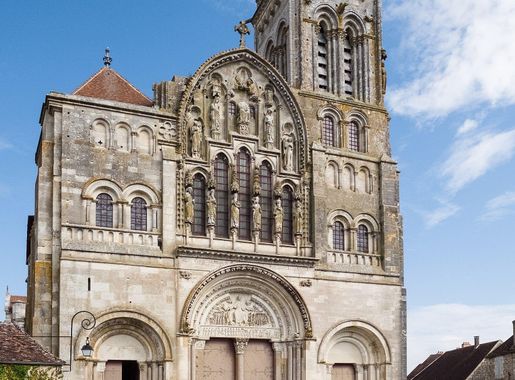
Burgundy Vineyards: A Taste of French Elegance
Discover the exquisite Burgundy Vineyards in France, where world-class wines meet the scenic beauty and rich history of the French countryside.
The Burgundy Vineyards in France are a must-visit for wine lovers and anyone enchanted by the charm of the French countryside. Nestled in the heart of France, this region is renowned for producing some of the world's finest wines. From the moment you arrive, you will be greeted by the sight of lush, rolling hills covered in meticulously maintained grapevines. Visitors can explore the picturesque villages that dot the landscape, each with its unique history and character. The local wineries offer tours and tastings, providing an insider's look into the art of winemaking. You can savor a variety of wines, including the celebrated Pinot Noir and Chardonnay, while learning about the intricate processes that go into creating these exceptional beverages. Beyond the vineyards, Burgundy is rich in cultural and historical attractions. The region boasts stunning medieval architecture, charming markets, and gourmet restaurants where you can indulge in traditional French cuisine. Whether you're strolling through the vineyards, exploring ancient castles, or enjoying a leisurely meal, Burgundy offers a perfect blend of relaxation and discovery.
Local tips in Burgundy Vineyards
- Visit during the harvest season in September and October for a unique experience.
- Book winery tours in advance, especially during peak tourist seasons.
- Wear comfortable shoes for walking through the vineyards and village streets.
- Try the local cuisine, particularly dishes that pair well with Burgundy wines.
- Bring a camera to capture the stunning landscapes and charming villages.
Burgundy Vineyards: A Taste of French Elegance
The Burgundy Vineyards in France are a must-visit for wine lovers and anyone enchanted by the charm of the French countryside. Nestled in the heart of France, this region is renowned for producing some of the world's finest wines. From the moment you arrive, you will be greeted by the sight of lush, rolling hills covered in meticulously maintained grapevines. Visitors can explore the picturesque villages that dot the landscape, each with its unique history and character. The local wineries offer tours and tastings, providing an insider's look into the art of winemaking. You can savor a variety of wines, including the celebrated Pinot Noir and Chardonnay, while learning about the intricate processes that go into creating these exceptional beverages. Beyond the vineyards, Burgundy is rich in cultural and historical attractions. The region boasts stunning medieval architecture, charming markets, and gourmet restaurants where you can indulge in traditional French cuisine. Whether you're strolling through the vineyards, exploring ancient castles, or enjoying a leisurely meal, Burgundy offers a perfect blend of relaxation and discovery.
When is the best time to go to Burgundy Vineyards?
Iconic landmarks you can’t miss
Clos de Vougeot Castle
Explore the historical charm and exquisite wines of Clos de Vougeot Castle, a must-visit destination in the heart of Burgundy, France.
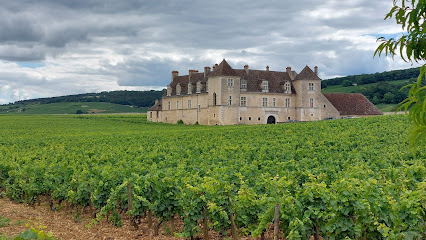
Chateau de Savigny-les-Beaune
Discover the captivating history and exquisite wine heritage at Chateau de Savigny-les-Beaune, a must-visit castle and museum in Burgundy.
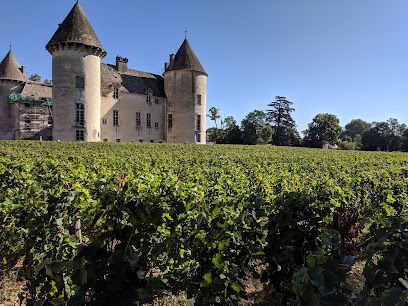
Château de Sully
Discover the enchanting Château de Sully, a historical landmark and winery surrounded by beautiful gardens in the heart of France's scenic countryside.
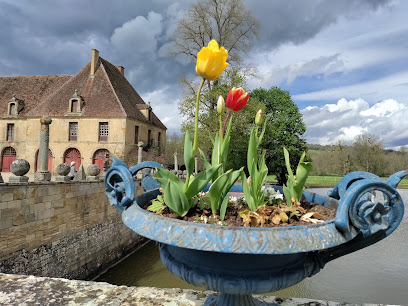
Château de Germolles
Discover the charm and history of Château de Germolles, a stunning castle in the heart of Bourgogne, perfect for a leisurely exploration.

Castle Pierreclos
Discover the enchanting Castle Pierreclos in Burgundy, France – a perfect blend of history, wine, and breathtaking landscapes for every traveler.
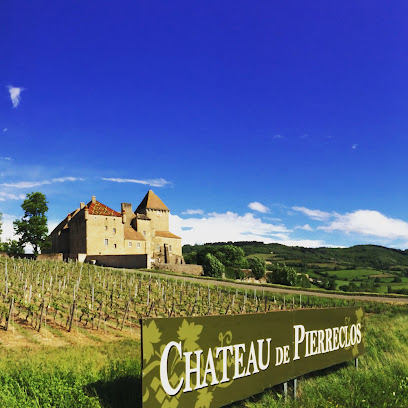
Château de Meursault
Explore the historic Château de Meursault, a stunning winery and castle in Burgundy, known for its exquisite wines and rich cultural heritage.
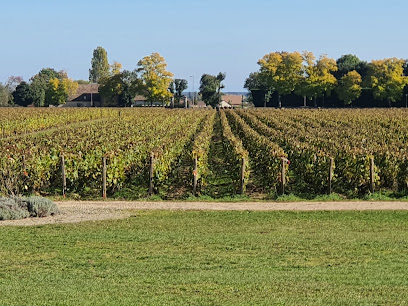
Castle of Santenay
Discover the enchanting Castle of Santenay, a historic winery in Burgundy, where exquisite wines and stunning landscapes await your visit.
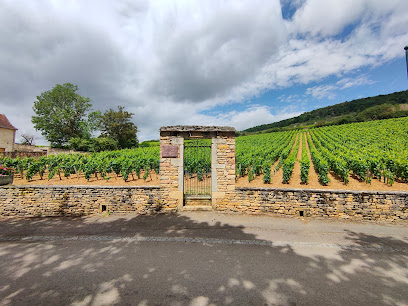
Cité des Climats et vins de Bourgogne
Discover Burgundy's exquisite wine heritage at Cité des Climats et Vins de Bourgogne, where tradition meets innovation in the heart of Beaune.
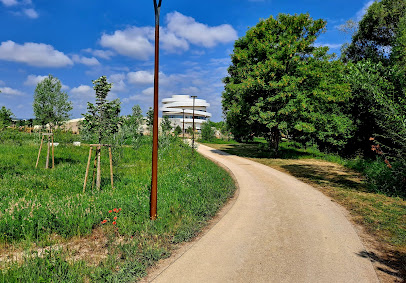
Musée du Vin - Hôtel des Ducs de Bourgogne
Explore the rich viticultural history of Burgundy at the Musée du Vin - a captivating museum experience in the heart of Beaune.
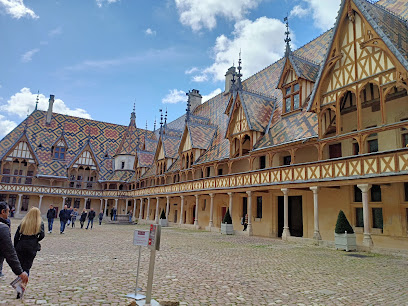
Château De Pommard
Explore the enchanting Château De Pommard - a premier winery in Burgundy, France, offering exquisite wines and a rich cultural experience.

Château de la Crée
Discover the enchanting Château de la Crée in Santenay, where exquisite wines and stunning vineyard views await every visitor in the heart of Burgundy.
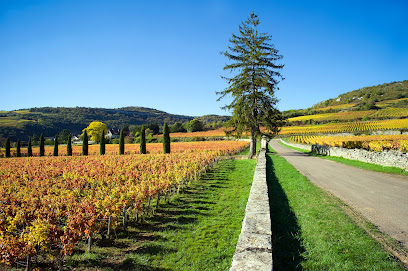
Château de Couches
Explore the stunning Château de Couches, a historical landmark and winery in the heart of Burgundy, where history and fine wines come together.
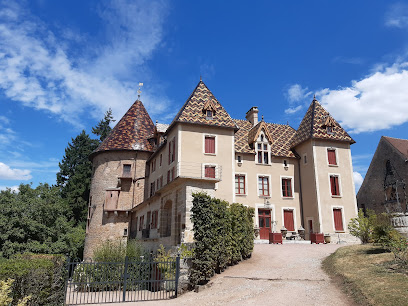
Domaine Debray
Discover the beauty and flavor of Burgundy at Domaine Debray, a premier winery in the heart of Beaune, where exceptional wines meet rich heritage.
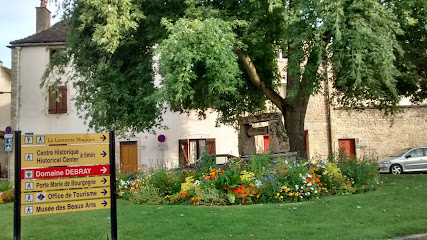
Chemins de Bourgogne
Experience the magic of Burgundy's vineyards at Chemins de Bourgogne, where exquisite wines and stunning landscapes await every traveler.
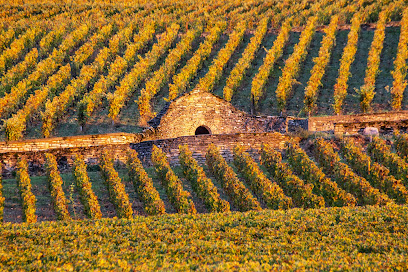
Safari Tours
Discover the beauty of Burgundy with Safari Tours in Beaune, offering luxurious vineyard excursions and captivating countryside adventures.
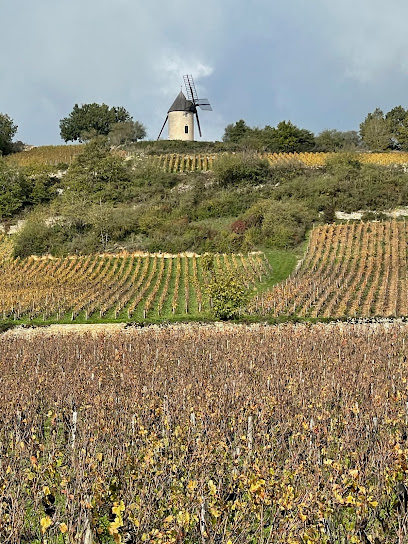
Unmissable attractions to see
Fontenay Abbey
Explore the tranquil beauty and rich history of Fontenay Abbey, a UNESCO World Heritage site in Montbard, France, perfect for culture enthusiasts.
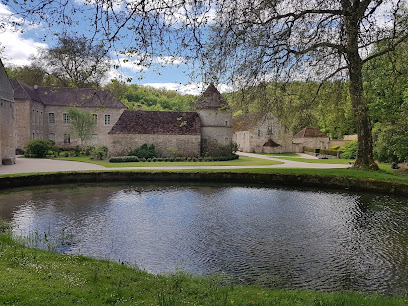
Château de Cormatin
Experience the grandeur of Château de Cormatin, a stunning French Renaissance castle surrounded by beautiful gardens and rich history.
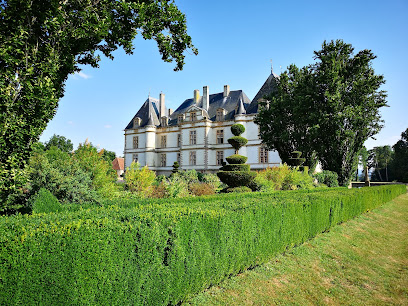
Park Bouzaise
Experience the lush landscapes and serene ambiance of Park Bouzaise in Beaune, a perfect retreat for nature lovers and cultural explorers.

Chateau de Savigny-les-Beaune
Explore the enchanting Chateau de Savigny-les-Beaune, a historic castle and museum showcasing vintage automobiles and stunning gardens in the heart of Burgundy.
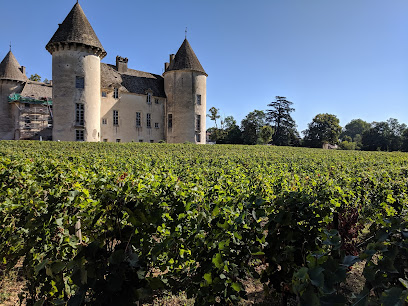
Palais des Ducs et des États de Bourgogne
Explore the rich history and stunning architecture of the Palais des Ducs et des États de Bourgogne, a must-visit historical landmark in Dijon.
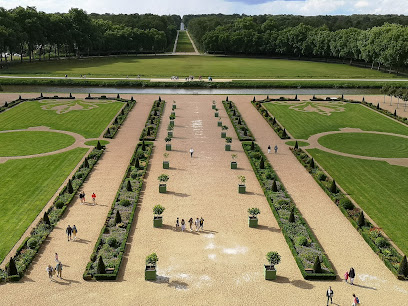
Le Cassissium
Explore the world of blackcurrants at Le Cassissium, a unique museum in Nuits-Saint-Georges dedicated to the rich heritage and flavors of this iconic berry.
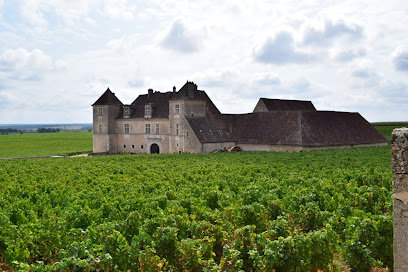
Château d'Ancy-le-Franc
Explore the stunning Château d'Ancy-le-Franc, a Renaissance gem in Burgundy, showcasing exquisite architecture and beautiful gardens.

The Owl of Dijon
Explore the Owl of Dijon, a charming tourist attraction that reveals the rich history and culture of this beautiful French city.

Chalon Cathedral
Discover the stunning Chalon Cathedral, a masterpiece of Gothic architecture in the heart of Chalon-sur-Saône, France.
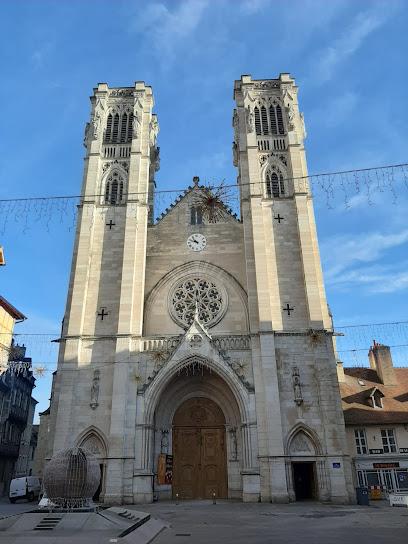
Berzé Castle
Explore Berzé Castle, a stunning historical landmark in Burgundy, France, known for its breathtaking architecture and rich medieval history.
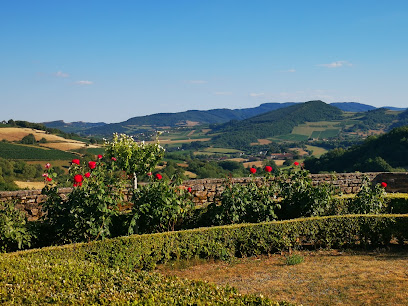
Castle Commarin
Explore the historical beauty of Castle Commarin in the heart of France, where rich heritage meets stunning landscapes and local charm.
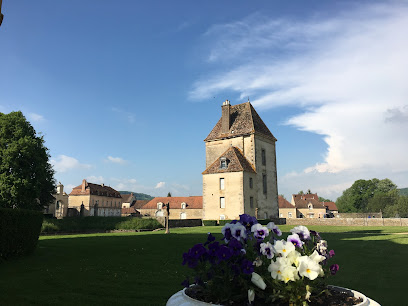
Château de Tanlay
Explore Château de Tanlay, a breathtaking castle in Burgundy with stunning architecture, beautiful gardens, and a rich historical narrative waiting to be discovered.
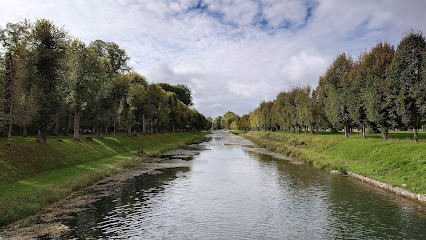
Castle of Drée
Explore the stunning Château de Drée in Curbigny, a beautiful castle surrounded by picturesque gardens and rich history, perfect for travelers seeking elegance.
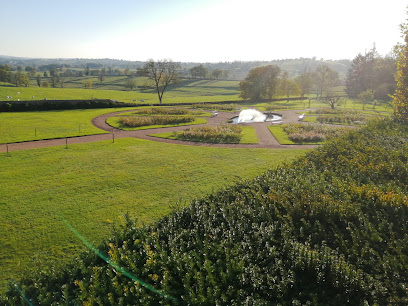
Château de Sully
Explore the majestic Château de Sully, a historical landmark with beautiful gardens, rich history, and delightful experiences for all ages.
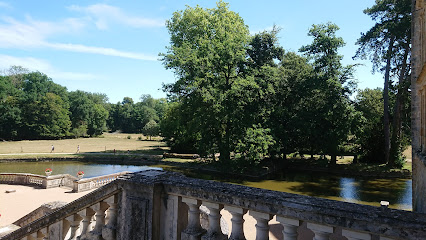
Château de Germolles
Explore the enchanting Château de Germolles, a historic castle in Mellecey, offering a glimpse into medieval Burgundy's rich heritage and stunning architecture.
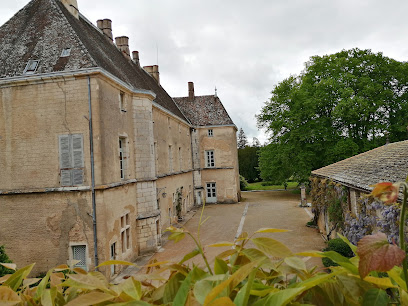
Essential places to dine
Le Relais Bernard Loiseau
Experience exquisite French cuisine at Le Relais Bernard Loiseau – a Michelin-starred restaurant offering luxury accommodations and a serene spa retreat.

Maison Lameloise
Experience exquisite French cuisine at Maison Lameloise in Chagny, where tradition meets innovation in every dish.
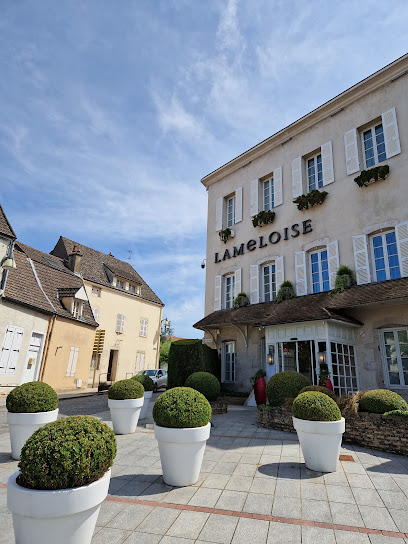
Le Charlemagne
Discover Le Charlemagne: A fine dining experience blending Japanese artistry with Burgundian charm amidst stunning vineyard views.
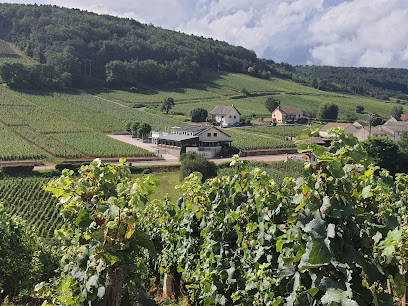
L’Écrit'Vin
Discover L’Écrit'Vin in Beaune: where traditional French cuisine meets modern elegance in a charming brasserie setting.
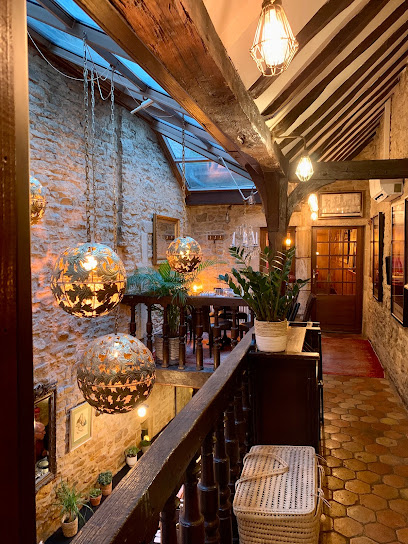
Le Cellier Volnaysien
Experience authentic French cuisine at Le Cellier Volnaysien - where local flavors meet exquisite wines in the heart of Burgundy.
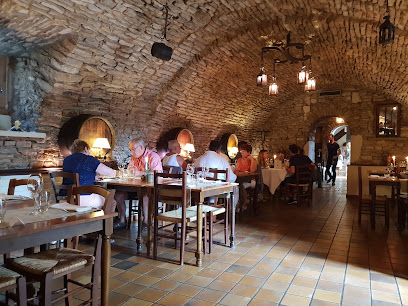
Restaurant La Toute Petite Auberge
Experience authentic French cuisine at Restaurant La Toute Petite Auberge in Vosne-Romanée - a culinary journey through local flavors.

Restaurant le cheval Noir
Experience authentic French cuisine at Restaurant le Cheval Noir in Beaune – where every meal is a celebration of local flavors.

L'Auberge du Vieux Vigneron
Discover authentic French cuisine at L'Auberge du Vieux Vigneron in Corpeau - where local flavors meet charming ambiance.
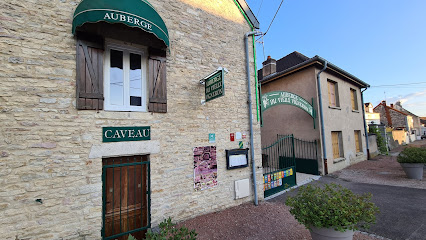
Restaurant La Cabotte
Experience exquisite modern French cuisine paired with exceptional wines at Restaurant La Cabotte in Nuits-Saint-Georges.
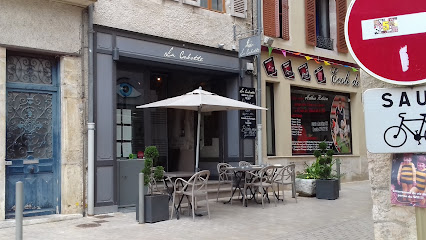
Caves Madeleine
Discover exquisite French-Mediterranean cuisine at Caves Madeleine in Beaune - where every meal is a celebration of flavor and tradition.
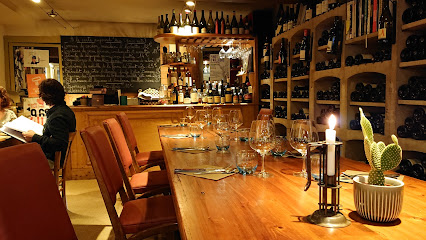
Loiseau des Vignes
Discover exquisite French cuisine at Loiseau des Vignes in Beaune - where tradition meets elegance.
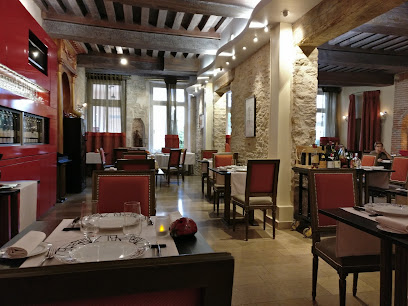
Restaurant Le Soufflot de Meursault
Experience exquisite French cuisine in the heart of Burgundy at Restaurant Le Soufflot de Meursault - a true culinary gem.
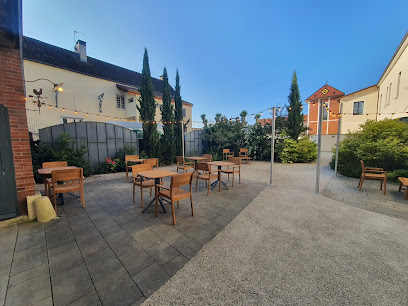
L'épisode
Discover authentic French cuisine at L'épisode in Meursault—where each dish tells a story of Burgundy's rich culinary heritage.
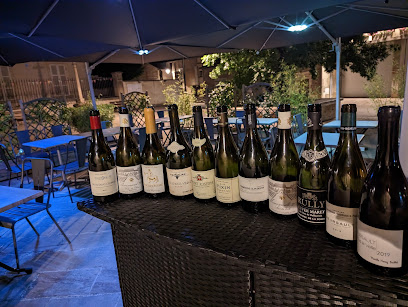
Restaurant Le Terroir
Discover authentic French cuisine at Restaurant Le Terroir in Santenay - where local flavors meet traditional culinary artistry.
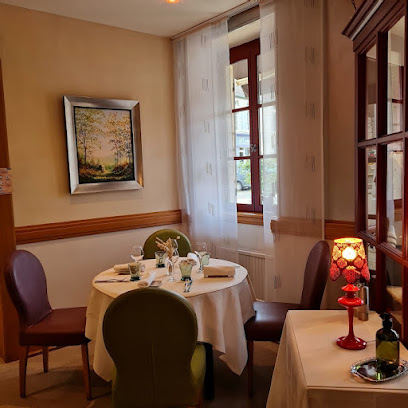
Château de Cîteaux | Restaurant Gastronomique
Discover exquisite haute French cuisine at Château de Cîteaux in Meursault – where every meal is a celebration of Burgundy's rich culinary heritage.
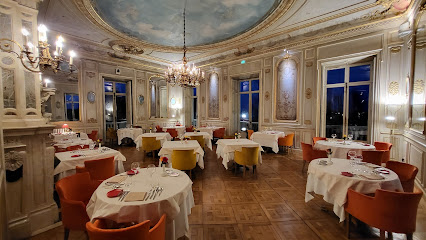
Markets, malls and hidden boutiques
Athenaeum - Beaune
Discover Athenaeum in Beaune: the ultimate destination for book lovers, food enthusiasts, and wine connoisseurs in Burgundy.
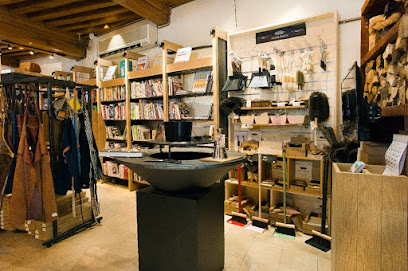
Boutique Wine Market
Explore exquisite wines and the essence of Burgundy at Beaune's Boutique Wine Market, where every bottle tells a story.
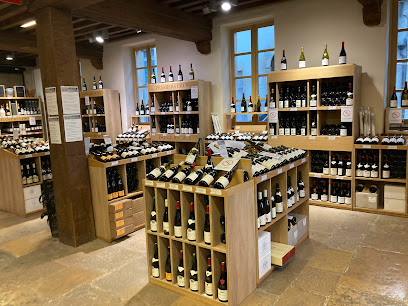
La Grande Cave de Vougeot
Experience the finest wines of Burgundy at La Grande Cave de Vougeot, where tradition meets excellence in every bottle.
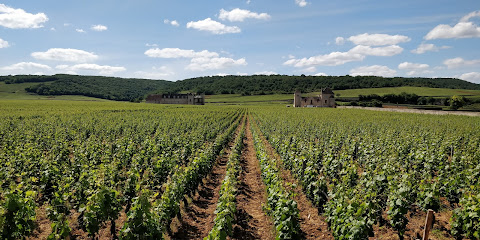
Alain Hess Cheesemonger
Explore the exquisite world of cheese and fine wines at Alain Hess Cheesemonger in Beaune, a culinary gem in Burgundy.
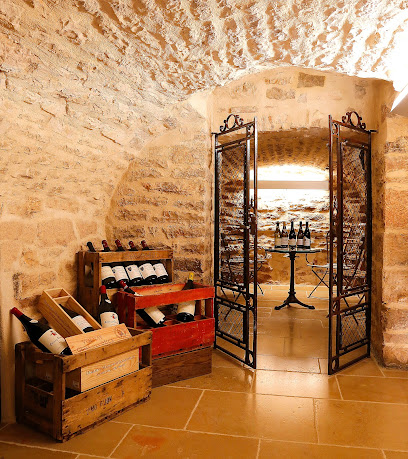
Nuiton Beaunoy - Caves des Hautes Côtes de Beaune
Discover the essence of Burgundy at Nuiton Beaunoy – Caves des Hautes Côtes de Beaune, where fine wines and rich traditions await.

Bouchard Ainé et Fils
Explore the storied vineyards and exquisite wines of Bouchard Ainé et Fils in the heart of Beaune, Burgundy's iconic wine region.
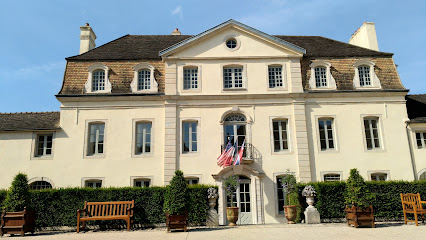
Le Cellier de la Cabiote
Experience the essence of Burgundy at Le Cellier de la Cabiote, your gateway to exquisite wines and local expertise in Beaune.

Bouchard Père et Fils
Discover the rich heritage of Burgundy wines at Bouchard Père et Fils in Beaune, where history and flavor intertwine for an unforgettable experience.
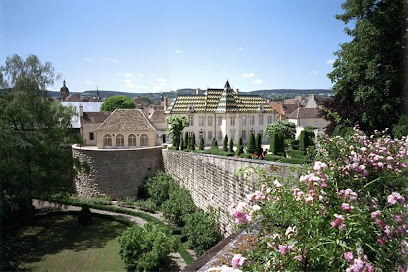
Millésimes a la Carte
Explore the exquisite selection of local and international wines at Millésimes à la Carte in Beaune, a must-visit for wine enthusiasts.
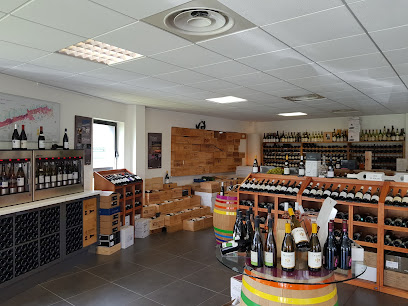
CPH La Grande Boutique du Vin
Explore the rich heritage of Burgundy at CPH La Grande Boutique du Vin, where wine lovers discover exceptional selections and expert guidance.

La Vinothèque
Discover the essence of Burgundy at La Vinothèque, Beaune's premier wine store, offering a curated selection of exquisite local wines.
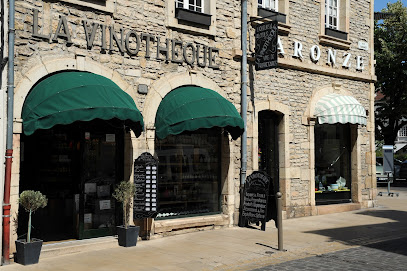
Mes Bourgognes Beaune
Explore the finest wines of Burgundy at Mes Bourgognes Beaune, where every bottle tells a story of heritage and craftsmanship in the heart of France.
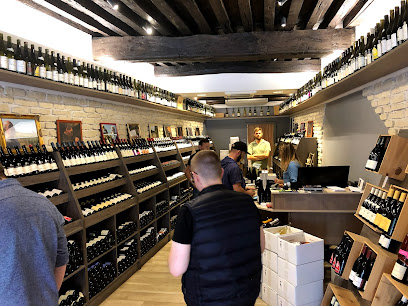
La Maison Vougeot
Discover the exquisite selection of wines at La Maison Vougeot, a charming liquor store and wine cellar in the heart of Burgundy.
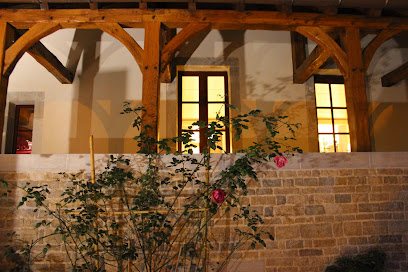
Avintures
Explore Avintures in Beaune – a premier wine store celebrating Burgundy's rich viticultural heritage with curated selections and expert guidance.
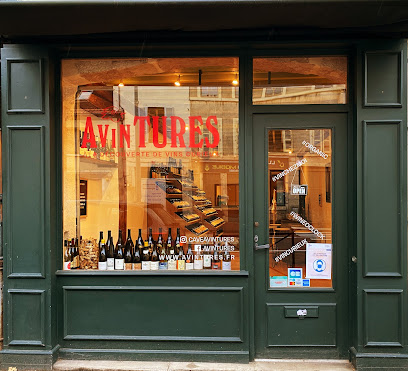
Le Caveau à Auxey
Explore the heart of Burgundy at Le Caveau à Auxey, a premier wine store and tourist attraction showcasing the region's finest wines.
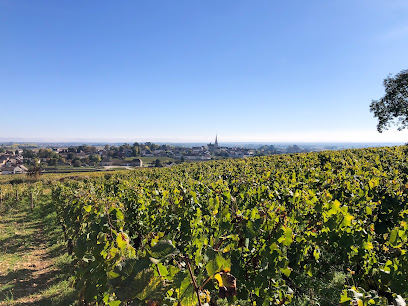
Essential bars & hidden hideouts
Flannery's
Discover the lively atmosphere of Flannery's Pub in Dijon, where local culture meets vibrant nightlife for an unforgettable experience.
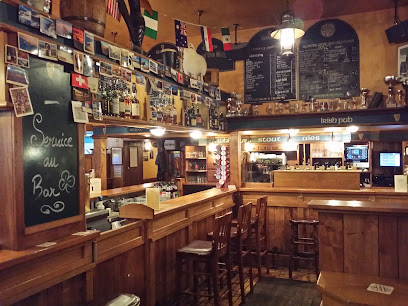
L'O des Vignes
Experience exquisite French cuisine at L'O des Vignes in Fuissé, a fine dining bistro renowned for its local ingredients and superb wine selection.
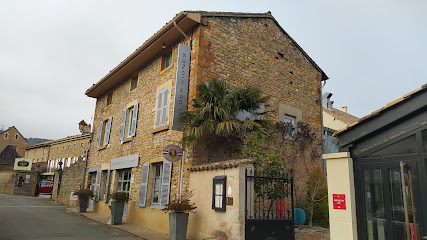
Dr. Wine
Experience the essence of Burgundy at Dr. Wine, where exquisite dining meets a sophisticated wine bar in the heart of Dijon.
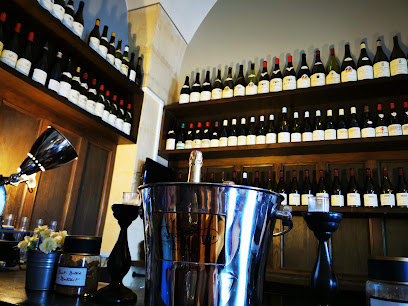
The Barbarian's Pub
Experience the warmth of Irish hospitality at The Barbarian's Pub in Dijon, where hearty meals and lively entertainment await every visitor.
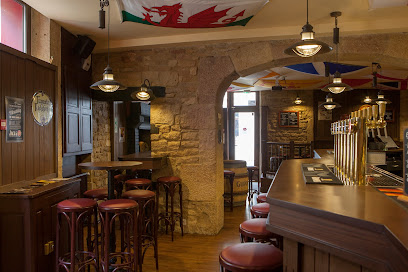
Le Bout du Monde
Experience the essence of Burgundy at Le Bout du Monde, a wine bar offering exquisite local wines and delicious tapas in Beaune.
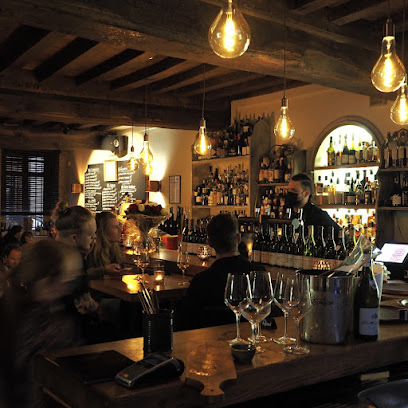
Caveau de la Chouette
Discover the exquisite flavors of Burgundy at Caveau de la Chouette, Dijon's charming wine bar and restaurant offering a delightful culinary experience.

La Dilettante
Experience the exquisite flavors of Beaune at La Dilettante, where wine and culinary artistry meet in a charming setting.
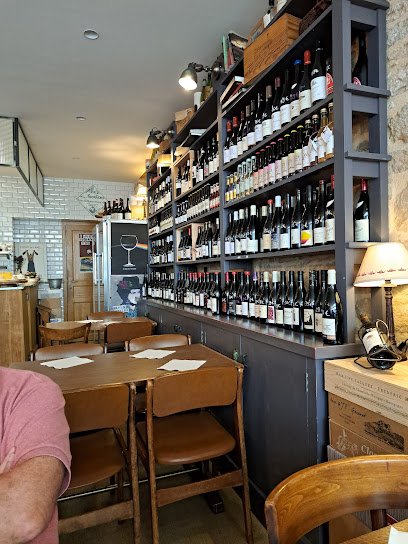
Caveau de Saulx (Le Trou)
Experience the rich flavors of Burgundy at Caveau de Saulx, a premier wine bar and store in the heart of Dijon, perfect for all wine lovers.
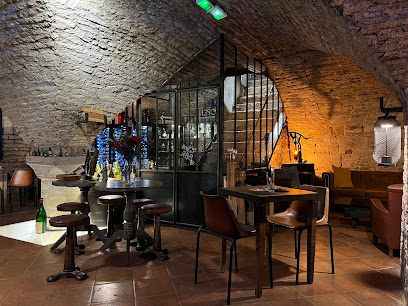
la Parenthèse
Discover the essence of Burgundy at la Parenthèse, a cozy wine bar in Beaune offering exquisite local wines and a welcoming atmosphere.
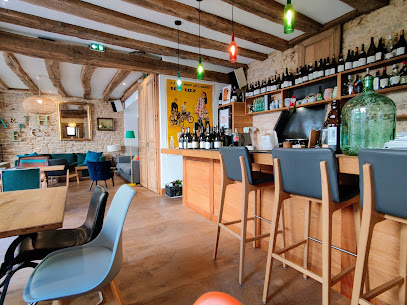
La Comédie du Vin
Discover the enchanting La Comédie du Vin in Beaune, where exquisite wines and authentic French cuisine come together in a delightful atmosphere.
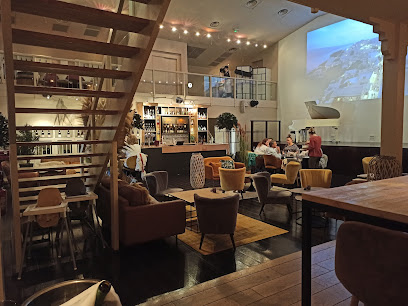
Au Vieux Millésime
Experience the best of Burgundy at Au Vieux Millésime, a charming wine bar in the heart of Dijon with exceptional wines and a cozy atmosphere.
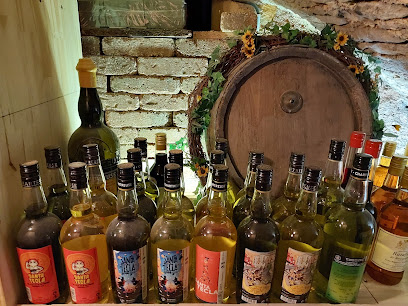
La Cave Se Rebiffe
Experience the charm of La Cave Se Rebiffe, a delightful wine bar in Dijon known for its extensive selection and cozy atmosphere.
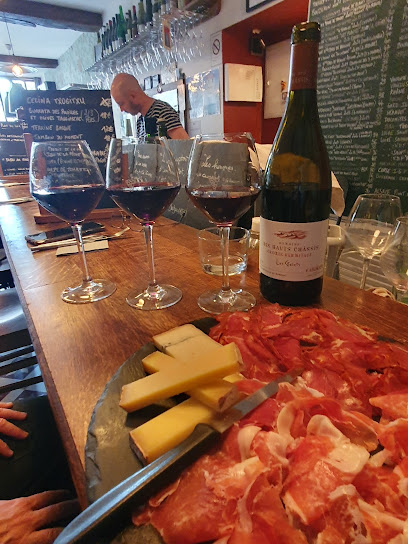
La Gobeleterie
Experience the vibrant nightlife of Dijon at La Gobeleterie, where expertly crafted cocktails meet a lively atmosphere.
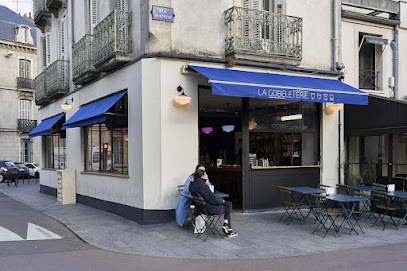
Maison Chanzy
Explore the exquisite wines of Burgundy at Maison Chanzy, a charming wine bar and cellar in Puligny-Montrachet, where taste and tradition meet.

La Cave du Bareuzai
Explore the exquisite wines and delightful tastings at La Cave du Bareuzai, a charming wine store in Chorey-les-Beaune, France.
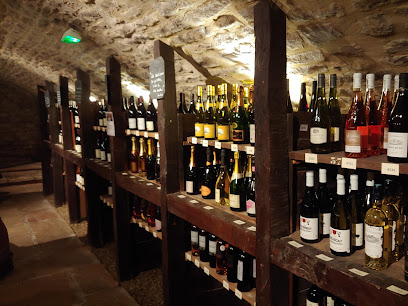
Local Phrases about Burgundy Vineyards
-
- HelloBonjour
[bon-zhoor] - GoodbyeAu revoir
[oh re-vwar] - YesOui
[wee] - NoNon
[nohn] - Please/You're welcomeS'il vous plaît/De rien
[seel voo pleh/duh ree-ehn] - Thank youMerci
[mehr-see] - Excuse me/SorryExcusez-moi/Désolé
[ehk-skew-zay mwah/deh-soh-lay] - How are you?Comment ça va?
[kohm-ahn sah vah] - Fine. And you?Bien. Et vous?
[byen. ay voo] - Do you speak English?Parlez-vous anglais?
[par-lay voo ahn-glay] - I don't understandJe ne comprends pas
[zhuh nuh kohm-prahn pah]
- HelloBonjour
-
- I'd like to see the menu, pleaseJe voudrais voir le menu, s'il vous plaît
[zhuh voo-dray vwahr luh meh-nyoo, seel voo pleh] - I don't eat meatJe ne mange pas de viande
[zhuh nuh mahnzh pah duh vee-ahnd] - Cheers!Santé!
[sahn-tay] - I would like to pay, pleaseJe voudrais payer, s'il vous plaît
[zhuh voo-dray pay-yay, seel voo pleh]
- I'd like to see the menu, pleaseJe voudrais voir le menu, s'il vous plaît
-
- Help!À l'aide!
[ah leyd] - Go away!Allez-vous en!
[ah-lay voo ahn] - Call the Police!Appelez la police!
[ah-puh-lay lah poh-lees] - Call a doctor!Appelez un médecin!
[ah-puh-lay uh mayd-sahn] - I'm lostJe suis perdu
[zhuh swee pair-doo] - I'm illJe suis malade
[zhuh swee mah-lahd]
- Help!À l'aide!
-
- I'd like to buy...Je voudrais acheter...
[zhuh voo-dray zheh-shay] - I'm just lookingJe regarde juste
[zhuh ruh-gahrd zhewst] - How much is it?Combien ça coûte?
[kohm-byen sah koot] - That's too expensiveC'est trop cher
[say troh shair] - Can you lower the price?Pouvez-vous baisser le prix?
[poo-veh voo beh-say luh pree]
- I'd like to buy...Je voudrais acheter...
-
- What time is it?Quelle heure est-il?
[kell uhr eh-teel] - It's one o'clockIl est une heure
[eel eh oon uhr] - Half past (10)Dix et demi
[dees ay dem-ee] - MorningMatin
[ma-tan] - AfternoonAprès-midi
[ah-pray mee-dee] - EveningSoir
[swahr] - YesterdayHier
[yehr] - TodayAujourd'hui
[oh-zhoor dew-ee] - TomorrowDemain
[duh-mahn] - 1Un
[uhn] - 2Deux
[duh] - 3Trois
[twah] - 4Quatre
[kah-truh] - 5Cinq
[sank] - 6Six
[sees] - 7Sept
[sept] - 8Huit
[wheet] - 9Neuf
[nuhf] - 10Dix
[dees]
- What time is it?Quelle heure est-il?
-
- Where's a/the...?Où est...?
[oo eh] - What's the address?Quelle est l'adresse?
[kell eh lad-rehs] - Can you show me (on the map)?Pouvez-vous me montrer (sur la carte)?
[poo-veh voo muh mohn-tray (soor lah kart)] - When's the next (bus)?Quand est le prochain (bus)?
[kahn eh luh proh-shahn (boos)] - A ticket (to ....)Un billet (pour ....)
[uhn bee-yay (poor)]
- Where's a/the...?Où est...?
History of Burgundy Vineyards
-
The history of Burgundy vineyards dates back to Roman times, around the 1st century AD. The Romans recognized the region's potential for cultivating vines and began planting the first vineyards. The renowned wine-growing tradition of Burgundy owes its inception to these early efforts.
-
During the Middle Ages, the Benedictine and Cistercian monks played a crucial role in the development of Burgundy vineyards. Monasteries such as the Abbey of Cluny and the Abbey of Cîteaux meticulously cultivated the land, optimizing grape varieties and winemaking techniques. Their dedication laid the groundwork for Burgundy’s reputation for producing high-quality wines.
-
The 14th and 15th centuries marked the Golden Age of Burgundy under the rule of the Dukes of Burgundy. They were great patrons of viticulture, promoting the region's wines across Europe. Philip the Bold's decree in 1395, which banned the cultivation of the inferior Gamay grape in favor of Pinot Noir, significantly improved the quality of Burgundy wines.
-
The French Revolution brought significant changes to Burgundy vineyards. The confiscation and redistribution of church lands led to the fragmentation of vineyards. Many smaller plots were sold to private individuals, resulting in the patchwork of vineyard ownership that characterizes the region today.
-
In the 20th century, Burgundy vineyards faced challenges such as phylloxera infestations and global competition. However, the establishment of the Appellation d'Origine Contrôlée (AOC) system in 1936 helped protect and standardize the quality of Burgundy wines. The AOC system ensures that wines labeled as Burgundy adhere to strict geographical and production criteria.
-
In 2015, the 'Climats' of Burgundy, which refers to the precisely delineated vineyard plots, were recognized as a UNESCO World Heritage site. This designation acknowledges the region's unique terroir and the centuries-old cultural practices that have shaped its viticultural landscape.
-
Burgundy’s cultural significance is celebrated through numerous wine festivals and events. The annual 'Hospices de Beaune' wine auction, dating back to 1859, is one of the most famous wine events in the world. These festivals highlight the region’s rich heritage and its continuing importance in the global wine industry.
Burgundy Vineyards Essentials
-
Burgundy Vineyards can be accessed via multiple routes. The nearest major airport is Lyon-Saint Exupéry Airport (LYS), about 150 kilometers away. Alternatively, Charles de Gaulle Airport (CDG) in Paris is about 300 kilometers away. From these airports, you can take a high-speed TGV train to Dijon, the capital of Burgundy. The journey from Paris to Dijon takes approximately 1.5 hours. Car rentals and shuttle services are also available at both airports for convenient access to the vineyards.
-
Once in Burgundy, the best way to explore the vineyards is by car. Car rentals are available in major cities like Dijon and Beaune. There are also cycling routes for those who prefer a more active way to see the vineyards. Public transportation options include regional trains and buses that connect the main towns and cities. Taxis and ride-sharing services are available but may be less frequent in rural areas.
-
The official currency in France is the Euro (EUR). Credit and debit cards are widely accepted in hotels, restaurants, and shops. However, it is advisable to carry some cash, especially when visiting smaller villages and rural establishments. ATMs are available in all major towns and cities in Burgundy. Ensure your card is enabled for international transactions to avoid any inconvenience.
-
Burgundy is generally a safe destination for tourists. However, like any other place, it is important to take standard precautions. Avoid leaving valuables in your car or unattended. While the crime rate is low, it is always best to stay vigilant, especially in crowded places like markets and festivals. There are no specific high-crime areas targeting tourists, but it is wise to be cautious and aware of your surroundings.
-
In case of emergency, dial 112 for immediate assistance. This number is the European emergency number and can be used for police, fire, or medical emergencies. Major towns like Dijon and Beaune have hospitals and clinics for medical emergencies. Pharmacies are also widely available for minor health issues. It is highly recommended to have travel insurance that covers medical emergencies and other unforeseen events.
-
Fashion: Do dress smart-casual, especially when dining out or visiting vineyards. Avoid overly casual or revealing clothing. Religion: Do respect religious sites and local customs. Avoid loud behavior and always be respectful. Public Transport: Do validate your ticket before boarding trains or buses. Don't eat or drink on public transport. Greetings: Do greet people with a 'Bonjour' (Good day) and a handshake. Eating & Drinking: Do try local wines and delicacies. Don't refuse wine tastings, as it is considered impolite. Always show appreciation for the local cuisine.
-
To experience Burgundy Vineyards like a local, visit the local markets in towns such as Beaune and Dijon to buy fresh produce and regional specialties. Engage with locals during vineyard tours; they are often eager to share stories and tips about wine-making. Don't miss participating in wine festivals and events like the Hospices de Beaune Wine Auction. For a unique experience, rent a bike and explore the 'Route des Grands Crus,' a scenic route that takes you through some of the most famous vineyards in the region.
Trending Landmarks in Burgundy Vineyards
-
Clos de Vougeot Castle
-
Chateau de Savigny-les-Beaune
-
Château de Sully
-
Château de Germolles
-
Castle Pierreclos
-
Château de Meursault
-
Castle of Santenay
-
Cité des Climats et vins de Bourgogne
-
Musée du Vin - Hôtel des Ducs de Bourgogne
-
Château De Pommard
-
Château de la Crée
-
Château de Couches
-
Domaine Debray
-
Chemins de Bourgogne
-
Safari Tours
Nearby Cities to Burgundy Vineyards
-
Things To Do in Lyon
-
Things To Do in Geneva
-
Things To Do in Lausanne
-
Things To Do in Annecy
-
Things To Do in Vevey
-
Things To Do in Montreux
-
Things To Do in Grenoble
-
Things To Do in Bern
-
Things To Do in Thun
-
Things To Do in Nancy
-
Things To Do in Basel
-
Things To Do in Colmar
-
Things To Do in Interlaken
-
Things To Do in Murren
-
Things To Do in Zermatt










